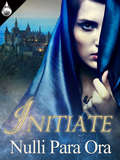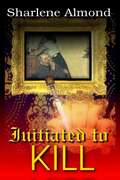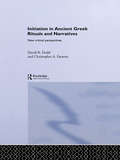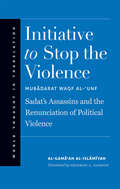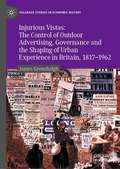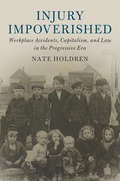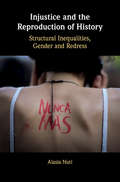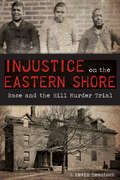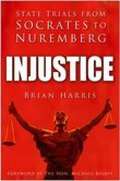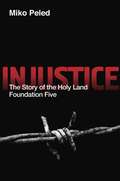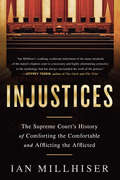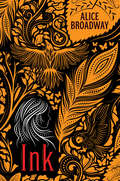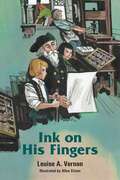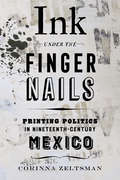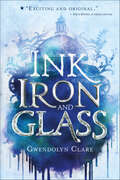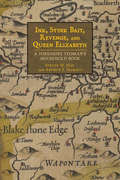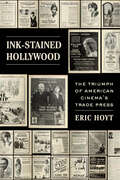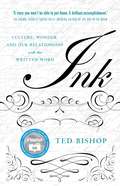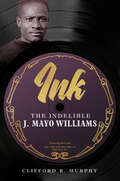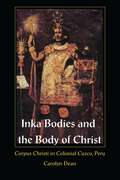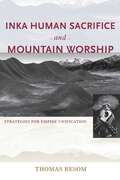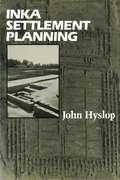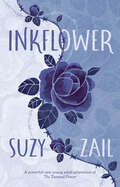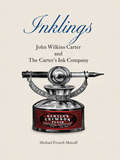- Table View
- List View
Initiate
by Nulli Para OraBound in service to the king, Initiates are selected and brought to the palace to forfeit their lives and fulfill their calling. That is until duty and honor clash with self-preservation. The resulting test of wills may destroy a kingdom and a new love which should never have seen the light of day.On the surface, the kingdom of Minra appears idyllic, steeped in peace and prosperity. This peace comes at a price. The villages of the kingdom offer up Initiates--individuals who vie for the chance to be selected as the King's Companion--to preserve the kingdom. Initiate and Companion are the most honored and coveted roles in all the land, for Companions nourish Minra's monarch with their life force until they die, allowing their wise king to survive for generations.Under Ritual Trainers bound in service to the king, Initiates are selected and brought to the palace to fulfill their duty. All Initiates greet this opportunity with happiness and reverence. Almost all. One Initiate forsakes time-honored traditions in favor of self-preservation.Is this forfeiture of life a worthy trade--or even necessary--for the good of the kingdom? In the battle for superiority, can love survive and overthrow generations of sacrifice and tradition?
Initiated To Kill
by Sharlene AlmondTwo men from two different generations, both initiated into a powerful organization that throughout history has sought control and uses their power for destruction. They leave behind a wake of murder, manipulation and ancient secrets. The first man wreaks havoc in and around the Whitechapel district of London, England in the 19th century. While the other stalks his victims in the cosmopolitan city of Seville, Spain in the 21st century; knowing that only he could uncover the true motives of one of the world's most infamous serial killers—Jack the Ripper.
Initiation in Ancient Greek Rituals and Narratives: New Critical Perspectives
by Christopher A. Faraone David B. DoddScholars of classical history and literature have for more than a century accepted `initiation' as a tool for understanding a variety of obscure rituals and myths, ranging from the ancient Greek wedding and adolescent haircutting rituals to initiatory motifs or structures in Greek myth, comedy and tragedy. In this books an international group of experts including Gloria Ferrari, Fritz Graf and Bruce Lincoln, critique many of these past studies, and challenge strongly the tradition of privileging the concept of initiation as a tool for studying social performances and literary texts, in which changes in status or group membership occur in unusual ways. These new modes of research mark an important turning point in the modern study of the religion and myths of ancient Greece and Rome, making this a valuable collection across a number of classical subjects.
Initiative to Stop the Violence
by Prof. Sherman Jackson al-Gama'ah al-IslamiyahFormerly one of the largest and most militant Islamic organizations in the Middle East, Egypt's al-Gama'ah al-Islamiyah is believed to have played an instrumental role in numerous acts of global terrorism, including the assassination of President Anwar Sadat and the 1993 World Trade Center bombing. In later years, however, the organization issued a surprising renunciation of violence, repudiating its former ideology and replacing it with a shari'a-based understanding and assessment of the purpose and proper application of jihad. This key manifesto of modern Islamist thought is now available to an English-speaking audience in an eminently readable translation by noted Islamic scholar Sherman A. Jackson. Unlike other Western and Muslim critiques of violent extremism, this important work emerges from within the movement of Middle Eastern Islamic activism, both challenging and enriching prevailing notions about the role of Islamists in fighting the scourge of extremist politics, blind anti-Westernism and, alas, wayward jihad.
Initiatives scandaleuses (Dames et Libertins #1)
by Amanda MarielLady Amelia n'a connu que le confort de la vie dans l'aristocratie anglaise du milieu du dix-huitième siècle. Mais quand son père meurt, il se retrouve seul, désemparé et âgé. Son tuteur, un oncle américain, lui a ordonné de partir pour l'Amérique où elle doit rester jusqu'à l'âge de la majorité. Avec l'aide de Grace et Sarah, Amelia fait accepter à son oncle de lui donner quatre semaines pour régler ses affaires et à son insu à la recherche d'un gentleman anglais à épouser. Malgré sa période de deuil, il tente de piéger l'un des meilleurs célibataires de Londres dans un mariage afin de pouvoir rester dans sa chère Angleterre. Le duc de Goldstone est d'une beauté diabolique, mais un duc écossais est totalement inacceptable en tant que mari possible. Après tout, l’Ecosse n’est pas sa bien-aimée Angleterre. Il a la mauvaise habitude d'apparaître au mauvais moment et d'empêcher ses plans soigneusement élaborés de prendre au piège un mari convenable. Les étincelles volent lorsque le couple est en désaccord et est attiré au même moment. Trouveront-ils un moyen d'arrêter de se disputer assez longtemps pour explorer leur passion grandissante?
Injurious Vistas: The Control of Outdoor Advertising, Governance and the Shaping of Urban Experience in Britain, 1817–1962 (Palgrave Studies in Economic History)
by James GreenhalghThis book is a history of outdoor advertising control in Britain between the early-nineteenth century and the beginning of the 1960s. It considers the development of primarily legislative and governmental approaches to controlling commercial signage, billboards, posters and hoardings in rural and urban areas. This study of how the proliferation of outdoor advertising was dramatically curtailed serves as a means to examine how the understanding and governance of lived spaces developed over a century and a half. In the early-nineteenth century outdoor adverting was just another material nuisance to regimes of improvement; by the turn of the century it was reframed as a threat to architecture, rural beauty and codes of moral self-governance. In the twentieth century it disrupted visual amenity and destabilized the civilizing influence of modern planning. More than merely a history of a radical and largely overlooked change in the visual environment, this is the story of how the modern state saw and regulated the lived spaces of Britain.
Injury Impoverished: Workplace Accidents, Capitalism, and Law in the Progressive Era (Cambridge Historical Studies in American Law and Society)
by Nate HoldrenThe late nineteenth- and early twentieth-century US economy maimed and killed employees at an astronomically high rate, while the legal system left the injured and their loved ones with little recourse. In the 1910s, US states enacted workers' compensation laws, which required employers to pay a portion of the financial costs of workplace injuries. Nate Holdren uses a range of archival materials, interdisciplinary theoretical perspectives, and compelling narration to criticize the shortcomings of these laws. While compensation laws were a limited improvement for employees in economic terms, Holdren argues that these laws created new forms of inequality, causing people with disabilities to lose their jobs, while also resulting in new forms of inhumanity. Ultimately, this study raises questions about law and class and about when and whether our economy and our legal system produce justice or injustice.
Injustice and the Reproduction of History: Structural Inequalities, Gender and Redress
by Alasia NutiDemands for redress of historical injustice are a crucial component of contemporary struggles for social and transnational justice. However, understanding when and why an unjust history matters for considerations of justice in the present is not straightforward. Alasia Nuti develops a normative framework to identify which historical injustices we should be concerned about, to conceptualise the relation between persistence and change and, thus, conceive of history as newly reproduced. Focusing on the condition of women in formally egalitarian societies, the book shows that history is important to theorise the injustice of gender inequalities and devise transformative remedies. Engaging with the activist politics of the unjust past, Nuti also demonstrates that the reproduction of an unjust history is dynamic, complex and unsettling. It generates both historical and contemporary responsibilities for redress and questions precisely those features of our order that we take for granted.
Injustice on the Eastern Shore: Race and the Hill Murder Trial (True Crime)
by G. Kevin HemstockLynching rumors simmered as journalists descended on the small town of Millington, Maryland, in the spring of 1892. The frenzy focused on nine African American men and boys--some as young as fifteen--accused of murdering Dr. James Heighe Hill, who was white. Prosecutors portrayed this as retribution for the Christmas Eve slaying of Thomas Campbell, an African American, for which no one faced criminal charges. Hill's alleged assailants were tried as a group before three white judges. Although some were clearly bystanders, all but one were convicted and sentenced. Four were executed by hanging, and the rest died in prison. Using court records, contemporary accounts and newspapers, author G. Kevin Hemstock narrates the tragic and compelling story of justice denied on Maryland's Eastern Shore.
Injustice: State Trials from Socrates to Nuremberg
by Brian Harris Michael BeloffTo a lawyer, injustice is the unfair conduct of a trial. This book looks into several notorious cases of supposed injustice, Socrates, Joan of Arc, Charles I, Admiral Byng, Lord Haw-Haw, and the Nuremberg Trials. It looks for answers to the legal question 'was the trial fair?', and the humane question 'was the accused guilty or innocent?'.
Injustice: The Story of the Holy Land Foundation Five
by Miko Peled<p>In July 2004, federal agents raided the homes of five Palestinian-American families, arresting the five dads. The first trial of the "Holy Land Foundation Five" ended in a hung jury. The second, marked by highly questionable procedures, resulted in very lengthy sentences--for "supporting terrorism" by donating to charities that the U.S. government itself and other respected international agencies had long worked with. <p>In 2013, human rights activist and author Miko Peled started investigating this case. He discussed the miscarriages of justice with the men's lawyers and heard from the men's families about the devastating effects the case had on their lives. He also traveled to the remote federal prison complexes where the men were held to conduct deep interviews. Injustice traces the labyrinthine course of this case, presenting a terrifying picture of governmental over-reach in post-9/11 America.</p>
Injustices: The Supreme Court's History of Comforting the Comfortable and Afflicting the Afflicted
by Ian MillhiserNow with a new epilogue.Few American institutions have inflicted greater suffering on ordinary people than the Supreme Court of the United States. Since its inception, the justices of the Supreme Court have shaped a nation where children toiled in coal mines, where Americans could be forced into camps because of their race, and where a woman could be sterilized against her will by state law. The Court was the midwife of Jim Crow, the right hand of union busters, and the dead hand of the Confederacy. Nor is the modern Court a vast improvement, with its incursions on voting rights and its willingness to place elections for sale.In this powerful indictment of a venerated institution, Ian Millhiser tells the history of the Supreme Court through the eyes of the everyday people who have suffered the most from it. America ratified three constitutional amendments to provide equal rights to freed slaves, but the justices spent thirty years largely dismantling these amendments. Then they spent the next forty years rewriting them into a shield for the wealthy and the powerful. In the Warren era and the few years following it, progressive justices restored the Constitution's promises of equality, free speech, and fair justice for the accused. But, Millhiser contends, that was an historic accident. Indeed, if it weren't for several unpredictable events, Brown v. Board of Education could have gone the other way.In Injustices, Millhiser argues that the Supreme Court has seized power for itself that rightfully belongs to the people's elected representatives, and has bent the arc of American history away from justice.
Ink (Ink Ser. #2)
by Alice BroadwayA deliciously dark, gorgeously written YA mystery that'll prickle your skin . . . and leave a permanent mark.There are no secrets in Saintstone.From the second you're born, every achievement, every failing, every significant moment are all immortalized on your skin. There are honorable marks that let people know you're trustworthy. And shameful tattoos that announce you as a traitor. After her father dies, Leora finds solace in the fact that his skin tells a wonderful story. That is, until she glimpses a mark on the back of his neck . . . the symbol of the worst crime a person can commit in Saintstone. Leora knows it has to be a mistake, but before she can do anything about it, the horrifying secret gets out, jeopardizing her father's legacy . . . and Leora's life.In her startlingly prescient debut, Alice Broadway shines a light on the dangerous lengths we go to make our world feel orderly--even when the truth refuses to stay within the lines. This rich, lyrical fantasy with echoes of Orwell is unlike anything you've ever read, a tale guaranteed to get under your skin . . .
Ink on His Fingers (Louise A. Vernon's Religious Heritage)
by Louise A. Vernon Allan EitzenJohann Gutenberg is working on printing the first Bible with type. Twelve-year-old Hans Dunne works in Gutenberg's shop as an apprentice printer. Soon, Hans finds himself in the middle of a type-stealing mystery. Will Hans, and the other pressmen be able to keep Herr Fust from getting the type? Will they be able to finish the Bible so many people will be able to read and learn from it?
Ink under the Fingernails: Printing Politics in Nineteenth-Century Mexico
by Corinna ZeltsmanDuring the independence era in Mexico, individuals and factions of all stripes embraced the printing press as a key weapon in the broad struggle for political power. Taking readers into the printing shops, government offices, courtrooms, and streets of Mexico City, historian Corinna Zeltsman reconstructs the practical negotiations and discursive contests that surrounded print over a century of political transformation, from the late colonial era to the Mexican Revolution. Centering the diverse communities that worked behind the scenes at urban presses and examining their social practices and aspirations, Zeltsman explores how printer interactions with state and religious authorities shaped broader debates about press freedom and authorship. Beautifully crafted and ambitious in scope, Ink under the Fingernails sheds new light on Mexico's histories of state formation and political culture, identifying printing shops as unexplored spaces of democratic practice, where the boundaries between manual and intellectual labor blurred.
Ink, Iron, and Glass (Ink, Iron, And Glass Ser. #1)
by Gwendolyn ClareIn debut author Gwendolyn Clare's thrilling Ink, Iron, and Glass, worlds collide as Elsa unveils a deep political conspiracy seeking to unlock the most dangerous weapon ever created—and only she can stop it.Can she write a world gone wrong?A certain pen, a certain book, and a certain person can craft entirely new worlds through a branch of science called scriptology. Elsa comes from one such world that was written into creation, where her mother—a noted scriptologist—constantly alters and expands their reality. But when her home is attacked and her mother kidnapped, Elsa is forced to cross into the real world and use her own scriptology gifts to find her. In an alternative Victorian Italy, Elsa finds a secret society of young scientists with a gift for mechanics, alchemy, or scriptology—and meets Leo, a gorgeous mechanist with a smart mouth and tragic past. She recruits the help of these fellow geniuses just as an assassin arrives on their doorstep.An Imprint Book“The novel samples historical figures the way a hip-hop album might sample a classic riff: it opens a window to European history, lets in fresh air, and sends facts flying... This novel is a source of serious fun.” —School Library Journal(starred review)“This debut novel is fully realized steampunk-fantasy, offering an alternate history that deftly and creatively adopts the politics of 19th-century Italy to create a compellingly unique world.... Exciting and original.” —Kirkus(starred review)“Clare's debut is built upon an intriguing premise... A solid series starter featuring a competent, flawed heroine that’s built for sf fans.” —Booklist“There’s much more to uncover in the political machinations of each world, and a gasp-worthy ending ensures a sequel.” —BCCB
Ink, Stink Bait, Revenge, and Queen Elizabeth: A Yorkshire Yeoman's Household Book
by Steven W. May Arthur F. MarottiIn Ink, Stink Bait, Revenge, and Queen Elizabeth, Steven W. May and Arthur F. Marotti present a recently discovered "household book" from sixteenth-century England. Its main scribe, John Hanson, was a yeoman who worked as a legal agent in rural Yorkshire. His book, a miscellaneous collection of documents that he found useful or interesting, is a rare example of a middle-class provincial anthology that contains, in addition to works from the country's cultural center, items of local interest seldom or never disseminated nationally. Among the literary highlights of the household book are unique copies of two ballads, whose original print versions have been lost, describing Queen Elizabeth's procession through London after the victory over the Spanish Armada; two poems attributed to Elizabeth herself; and other verse by courtly writers copied from manuscript and print sources. Of local interest is the earliest-known copy of a 126-stanza ballad about a mid-fourteenth-century West Yorkshire feud between the Eland and Beaumont families. The manuscript's utilitarian items include a verse calendar and poetic Decalogue, model legal documents, real estate records, recipes for inks and fish baits, and instructions for catching rabbits and birds. Hanson combined both professional and recreational interests in his manuscript, including material related to his legal work with wills and real estate transactions.As May and Marotti argue in their cultural and historical interpretation of the text, Hanson's household book is especially valuable not only for the unusual texts it preserves but also for the ways in which it demonstrates the intersection of the local and national and of popular and elite cultures in early modern England.
Ink-Stained Hollywood: The Triumph of American Cinema’s Trade Press
by Eric HoytA free open access ebook is available upon publication. Learn more at www.luminosoa.org. For the first half of the twentieth century, no American industry boasted a more motley and prolific trade press than the movie business—a cutthroat landscape that set the stage for battle by ink. In 1930, Martin Quigley, publisher of Exhibitors Herald, conspired with Hollywood studios to eliminate all competing trade papers, yet this attempt and each one thereafter collapsed. Exploring the communities of exhibitors and creative workers that constituted key subscribers, Ink-Stained Hollywood tells the story of how a heterogeneous trade press triumphed by appealing to the foundational aspects of industry culture—taste, vanity, partisanship, and exclusivity. In captivating detail, Eric Hoyt chronicles the histories of well-known trade papers (Variety, Motion Picture Herald) alongside important yet forgotten publications (Film Spectator, Film Mercury, and Camera!), and challenges the canon of film periodicals, offering new interpretative frameworks for understanding print journalism’s relationship with the motion picture industry and its continued impact on creative industries today.
Ink: Culture, Wonder, and Our Relationship with the Written Word
by Ted BishopA rich and imaginative discovery of how ink has shaped culture and why it is here to stay.Ink is so much a part of daily life that we take it for granted, yet its invention was as significant as the wheel. Ink not only recorded culture, it bought political power, divided peoples, and led to murderous rivalries. Ancient letters on a page were revered as divine light, and precious ink recipes were held secret for centuries. And, when it first hit markets not so long ago, the excitement over the disposable ballpoint pen equalled that for a new smartphone--with similar complaints to the manufacturers. Curious about its impact on culture, literature, and the course of history, Ted Bishop sets out to explore the story of ink. From Budapest to Buenos Aires, he traces the lives of the innovators who created the ballpoint pen--revolutionary technology that still requires exact engineering today. Bishop visits a ranch in Utah to meet a master ink-maker who relishes igniting linseed oil to make traditional printers' ink. In China, he learns that ink can be an exquisite object, the subject of poetry, and a means of strengthening (or straining) family bonds. And in the Middle East, he sees the world's oldest Qur'an, stained with the blood of the caliph who was assassinated while reading it. An inquisitive and personal tour around the world, Ink asks us to look more closely at something we see so often that we don't see it at all.
Ink: The Indelible J. Mayo Williams (Music in American Life)
by Clifford R. MurphyThe product of a hardscrabble childhood, J. Mayo “Ink” Williams parlayed an Ivy League education into unlikely twin careers as a foundational producer of Black music and pioneering Black player in the early NFL. Clifford R. Murphy tells the story of an ambitious, upwardly mobile life affected, but never daunted, by white society’s racism or the Black community’s class tensions. Williams caroused with Paul Robeson, recorded the likes of Ma Rainey and Blind Lemon Jefferson, and lined up against Chicago Bears player-coach George Halas. Though resented by the artists he exploited, Williams combined a rock-solid instinct for what would sell with an ear for music that put him at the forefront of finding, recording, and blending blues and jazz. Murphy charts Williams’s wide-ranging accomplishments while providing portraits of the cutthroat recording industry and the possibilities, however constrained, of Black life in the 1920s and 1930s. Vivid and engaging, Ink brings to light the extraordinary journey of a Black businessman and athlete.
Inka Bodies and the Body of Christ: Corpus Christi in Colonial Cuzco, Peru
by Carolyn J DeanIn Inka Bodies and the Body of Christ Carolyn Dean investigates the multiple meanings of the Roman Catholic feast of Corpus Christi as it was performed in the Andean city of Cuzco after the Spanish conquest. By concentrating on the era's paintings and its historical archives, Dean explores how the festival celebrated the victory of the Christian God over sin and death, the triumph of Christian orthodoxy over the imperial Inka patron (the Sun), and Spain's conquest of Peruvian society. As Dean clearly illustrates, the central rite of the festival--the taking of the Eucharist--symbolized both the acceptance of Christ and the power of the colonizers over the colonized. The most remarkable of Andean celebrants were those who appeared costumed as the vanquished Inka kings of Peru's pagan past. Despite the subjugation of the indigenous population, Dean shows how these and other Andean nobles used the occasion of Corpus Christi as an opportunity to construct new identities through tinkuy, a native term used to describe the conjoining of opposites. By mediating the chasms between the Andean region and Europe, pagans and Christians, and the past and the present, these Andean elites negotiated a new sense of themselves. Dean moves beyond the colonial period to examine how these hybrid forms of Inka identity are still evident in the festive life of modern Cuzco. Inka Bodies and the Body of Christ offers the first in-depth analysis of the culture and paintings of colonial Cuzco. This volume will be welcomed by historians of Peruvian culture, art, and politics. It will also interest those engaged in performance studies, religion, and postcolonial and Latin American studies.
Inka Human Sacrifice and Mountain Worship: Strategies for Empire Unification
by Thomas BesomThe Inka empire was the largest pre-Columbian polity in the New World. Its vast expanse, its ethnic diversity, and the fact that the empire may have been consolidated in less than a century have prompted much scholarly interest in its creation. In this study, Besom explores the ritual practices of human sacrifice and the worship of mountains, attested in both archaeological investigations and ethnohistorical sources, as tools in the establishment and preservation of political power.Besom examines the relationship between symbols, ideology, ritual, and power to demonstrate how the Cuzqueños could have used rituals to manipulate common Andean symbols to uphold their authority over subjugated peoples. He considers ethnohistoric accounts of the categories of human sacrifice to gain insights into related rituals and motives, and reviews the ethnohistoric evidence of mountain worship to predict locations as well as motives. He also analyzes specific archaeological sites and assemblages, theorizing that they were the locations of sacrifices designed to assimilate subject peoples, bind conquered lands to the state, and/or justify the extraction of local resources.
Inka Settlement Planning
by John HyslopBefore the Spanish conquest in the sixteenth century A.D., the Inka Empire stretched along the Pacific side of South America, all the way from Ecuador to northwest Argentina. Though today many Inka researchers focus on the imperial capital of Cuzco, Peru, and surrounding areas, ruins of Inka settlements abound throughout the vast territory of the former empire and offer many clues about how the empire was organized, managed, and defended. These outlying settlements, as well as those in the Cuzco area, form the basis for John Hyslop's detailed study Inka Settlement Planning.<P><P>Using extensive aerial photography and detailed site maps, Hyslop studies the design of several dozen settlements spread throughout the empire. In addition to describing their architecture and physical infrastructure, he gives special emphasis to the symbolic aspects of each site's design. Hyslop speculates that the settlement plans incorporate much iconography expressive of Inka ideas about the state, the cosmos, and relationships to non-Inka peoples—iconography perhaps only partially related to the activities that took place within the sites. And he argues that Inka planning concepts applied not only to buildings but also to natural features (stone outcrops, water sources, and horizons) and specialized landscaping (terracing).
Inkflower
by Suzy ZailInspired by a true story . . . Lisa's father has six months to live and a story to tell about a boy sent to Auschwitz—a boy who lost everything and started again. It's a story he has kept hidden—until now. But Lisa doesn't want to hear it because she has secrets too. No one at school knows she is Jewish or that her dad is sick, not even her boyfriend. But that's all about to change. And so is she. "A powerful Holocaust story of love, loss and hope."—Jayne Josem, Melbourne Holocaust Museum
Inklings: John Wilkins Carter And The Carter's Ink Company
by Michael French MetcalfInklings: John Wilkins Carter and The Carter’s Ink Company is the story of an old New England family and the companies they created and operated—beginning with Timothy Carter’s Old Corner Bookstore in downtown Boston and spanning a 150-year period. The focus of the book is The Carter’s Ink Company, which originated in Boston after the Civil War and prospered until 1976. The story also encompasses James Carter’s paper business in Boston and Nashua, NH. An in-depth look into the Carter’s family is woven throughout and shows how their devout faith served as the backbone for their commitments to business, their communities, and to their fellow mankind.
